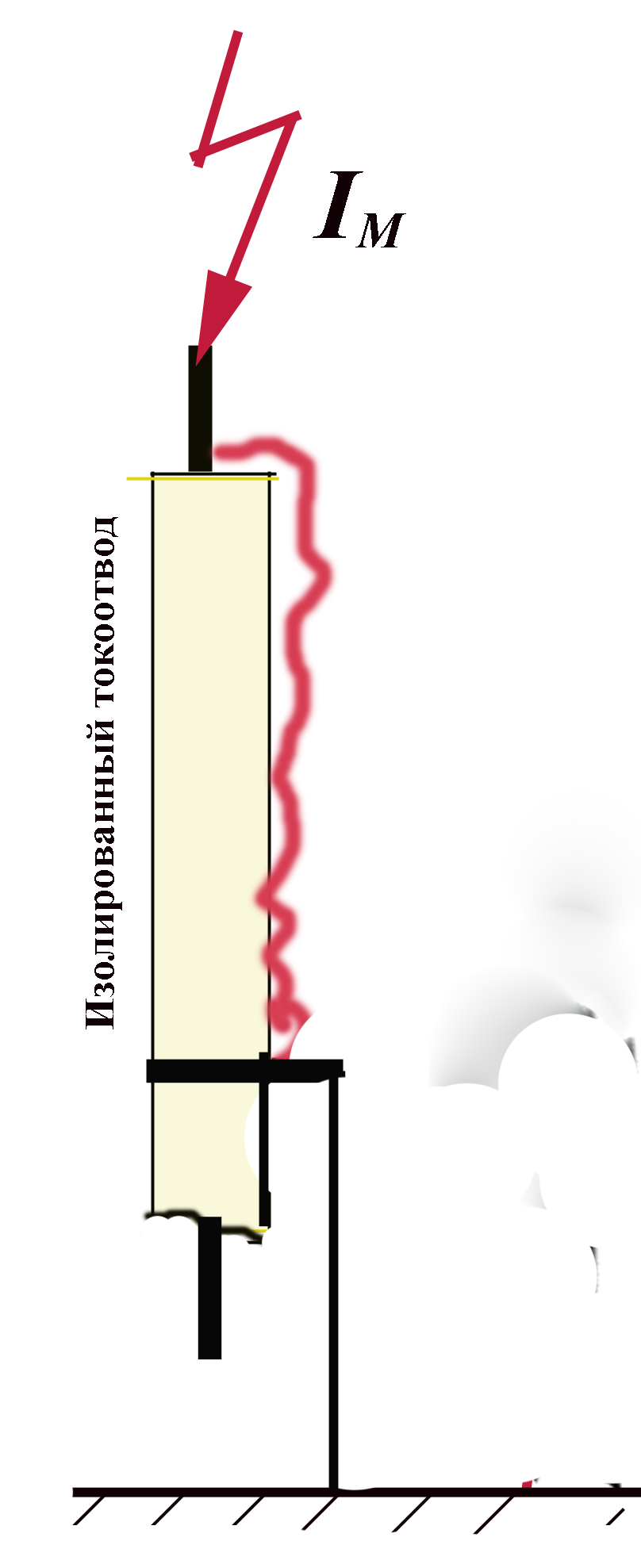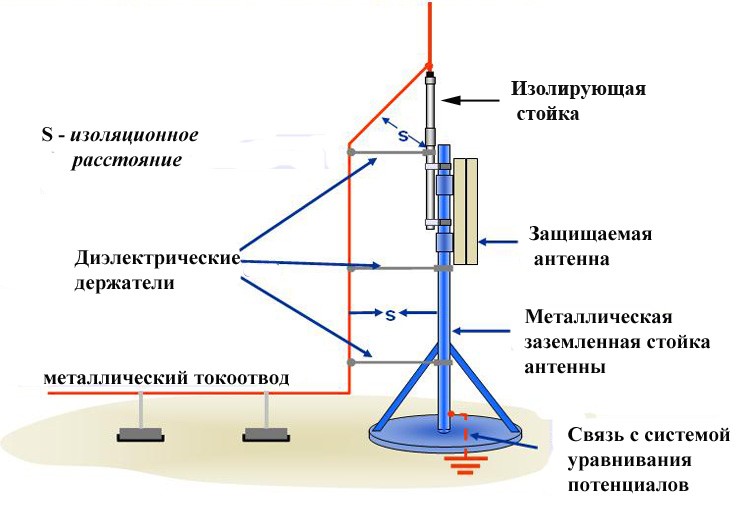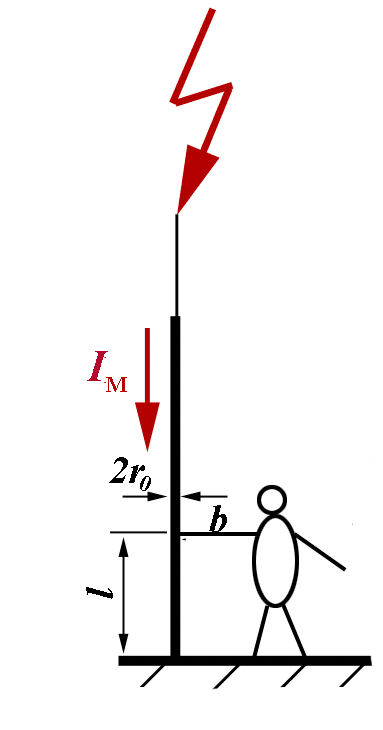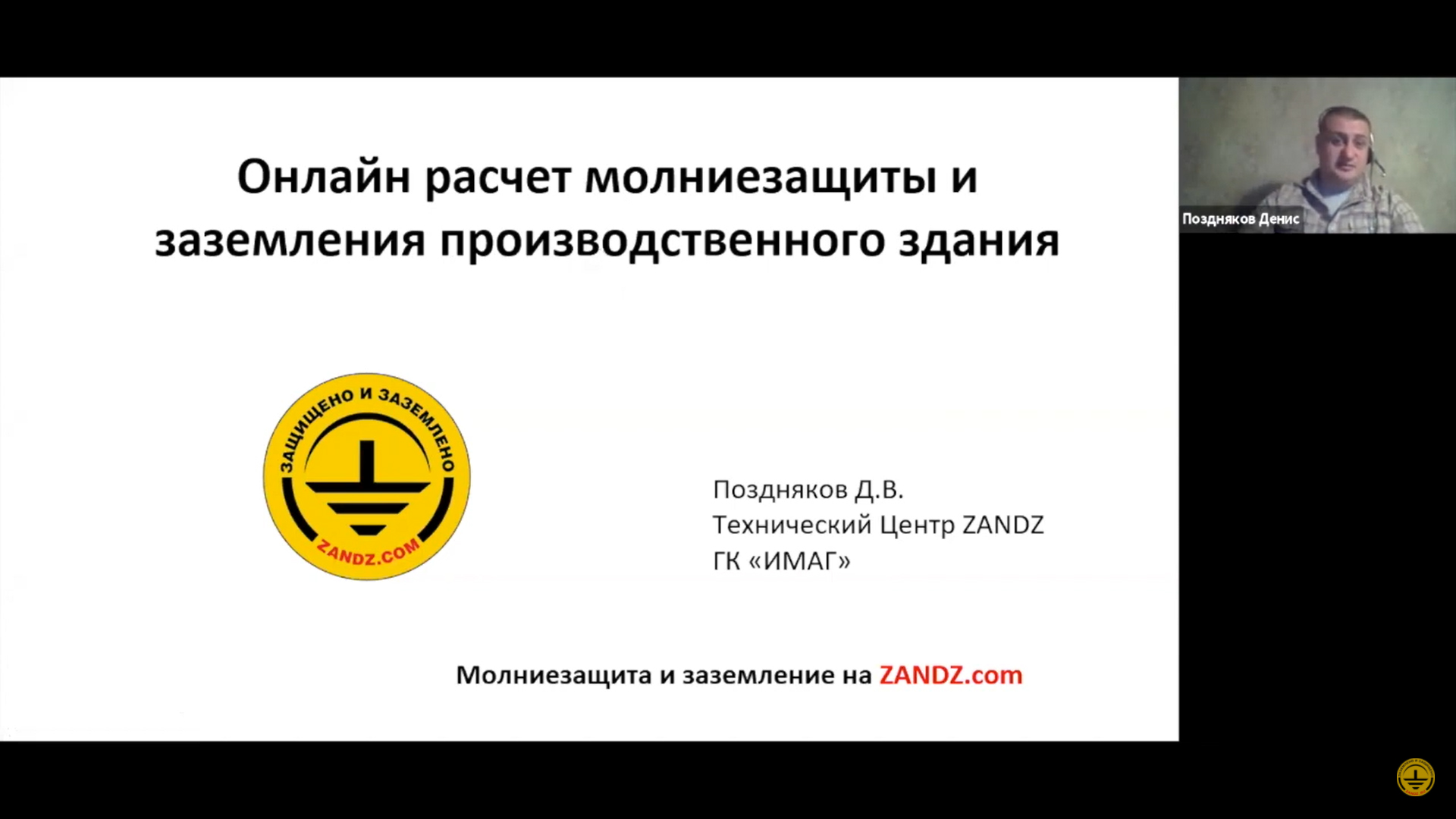The current collector on insulated supports does not only look bad. Moreover, such structure significantly increases the current collector's length, i.e. its inductance and inductive voltage drop. I would like to attach an insulated current collector to the lightning arrester, to pass it along the shortest possible path past the main equipment to be protected, and then attach to the potential equalizing bus or to the grounded structural element.
This evident idea is hard to implement in practice. The diagram in the figure allows to understand the physical essence of the problem.

Fig. Creeping discharge along the insulated conductor coating.
Изолированный токоотвод - Insulated current collector
Рис. Скользящий разряд по изолирующему покрытию проводника - Fig. Creeping discharge along the insulated conductor coating.
The metal current collector with a dielectric coating is attached to the lightning arrester and transfers lightning current to the ground thus creating a voltage on the current collector inductance. This voltage generates electrical field along the external dielectric surface... If the field exceeds the air ionization threshold, the formation of a creeping spark discharge begins along the external dielectric surface... Due to the extremely strengthened capacitive coupling of the formed plasma channel with the internal conductor, the process may pass with a very low voltage that is by an order of magnitude lower than in the non-excited air. The inhibition of such creeping discharge is the main problem when creating the insulated current collector.
Read article by prof. E.M. Bazelyan Actual Issues of Insulated Lightning Protection for more details.Related Articles:




